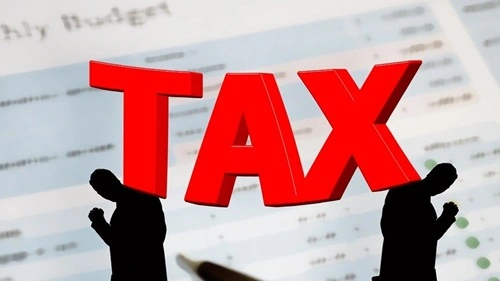Introduction
Businesses need third-party help for handling several of these compliance concerns within the Goods and Services Tax domain. This could include making tax payments, filing returns, or defending the company in front of GST authorities. Here, the Letter of Authorization is of prime importance. A legal document called a GST LOA authorizes a particular person or business to act on behalf of a firm that is registered for GST. It’s an important tool in ensuring smooth running of GST operations, especially when dealing with complex processes or when a business owner cannot manage all compliance needs manually. This detailed guide considers the complexities of a GST Letter of Authorization, including its form, importance, purpose, and more.
GST Letter of Authorization: Meaning
The entirety of a GST Letter of Authorization is a legal document that permits a corporation, individual, or other person to carry out particular GST-related tasks on behalf of a GST-registered entity. In other words, think about granting someone the power to represent you in GST-related situations. This representative, who will be able to access the GST system, file returns, issue payments, and perform other duties outlined in the LOA, may be a tax specialist, consultant, or even an employee.

Why is a GST Letter of Authorization Important?
The importance of a GST LOA stems from several key factors:
- Efficiency and Convenience: By assigning GST responsibilities to authorized representatives, businesses—particularly those with intricate operations—can save a substantial amount of time and money. They are able to concentrate on their main company operations as a result.
- Accuracy and Expertise: Complying with GST can be complex and call for specific understanding. By appointing a tax expert through a LOA, the chance of mistakes and fines is reduced and GST operations are managed correctly and legally.
- Representation before Authorities: The authorized representative may act on behalf of the company by presenting pertinent papers and information during audits, assessments, or other encounters with GST authorities.
- Continuity and continuity: By assigning a dedicated individual or organization, businesses can maintain continuity in their GST compliance procedures even in the case of organizational personnel changes.
- Decreased Risk: A well-written LOA restricts the representative’s actions to specified tasks and precisely outlines the area of authority. This shields the company from possible abuse of power.
- Funding: It can also help in getting instant business loan from lenders. This is possible by diverting the focus to things that matter to the business like getting funded for expansion.
Who Can Issue a GST Letter of Authorization?
The GST Letter of Authorization must be issued by an authorized signatory of the GST-registered company. The owner, partner, director, managing director, or any other individual authorized by the business to sign such contracts is typically referred to here.
Who Can be Appointed as an Authorized Representative?
The appointed representative can be a business, like a tax advising firm or a chartered accountancy firm, or an individual, like a tax consultant, accountant, or employee. The appointed representative should have the necessary skills and knowledge to perform the assigned GST tasks effectively.
What Should a GST Letter of Authorization Include?
A well-drafted GST LOA should contain the following key elements:
- Information about the Authorizing Business: This includes the legal name of the business, GSTIN, address, and phone number.
- The name, address, phone number, and GSTIN, if any, of the person or organization being approved are all part of the data of the approved Representative.
- Scope of Authorization: This is the most crucial part of the LOA. It clearly specifies the tasks that the authorized representative is permitted to perform. Examples include:
- Filing GSTR returns (GSTR-1, GSTR-3B, etc.)
- Making GST payments
- Applying for refunds
- Representing the business before GST authorities
- Updating GST registration details
- Handling e-way bills
- Duration of Authorization: The LOA should specify the period for which the authorization is valid. It can be for a specific duration or until revoked by the business.
- Signatures and Stamp: The LOA must be signed by an authorized signatory of the business, with their name, designation, and company stamp (if applicable). The authorized representative should also sign the LOA as acceptance of the authorization.
- Witness Details (Optional): While not mandatory, including details of witnesses can add further validity to the document.
Key Considerations:
- Specificity: Be very specific about the scope of authorization. Avoid vague terms.
- Regular Review: Periodically review the LOA to ensure it aligns with your current needs.
- Revocation: Include a clause on how the authorization can be revoked. Communicate any revocation promptly to the authorized representative and the GST authorities.
- Confidentiality: Add a section that emphasizes how important it is to keep company information private.
- Legal Advice: If you are in doubt about anything, you should always consult a tax counselor or legal expert before issuing a GST Letter of Authorization.
Also read: Is It Worth Taking A Home Loan In India? Pros and Cons
Conclusion
For businesses trying to streamline their GST compliance processes, the GST Letter of Authorization is a crucial document. Businesses can ensure effective, accurate, and lawful management of their GST operations by carefully drafting the LOA and clearly articulating the extent of permission. This effectively gives companies the ability to use experts’ knowledge or assign work efficiently, free them up to focus on their main business and relying on options like unsecured business loan to scale their business, and still follow the framework outlined by the GST laws. The subtleties contained in this text form the basis of navigating the intricacies of the GST landscape.

